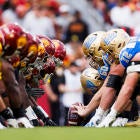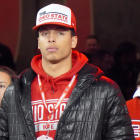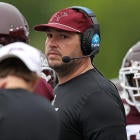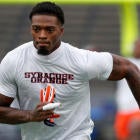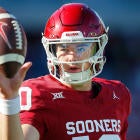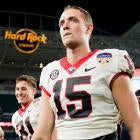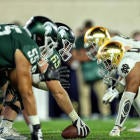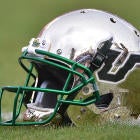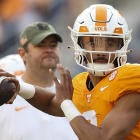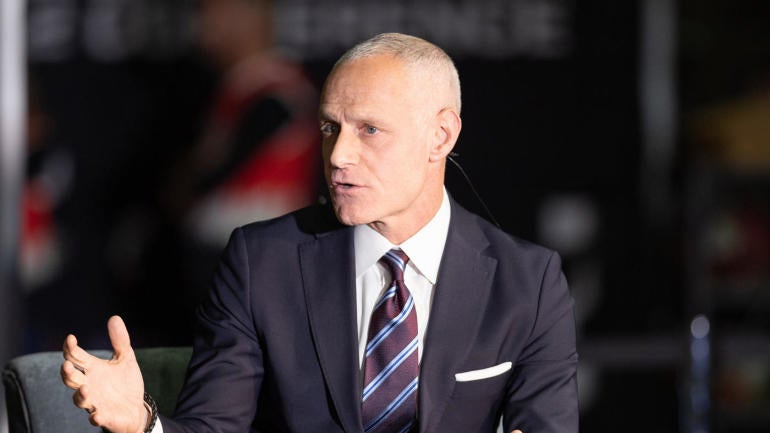
IRVING, Texas -- "Uncertainty" was the word at the top of mind as Big 12 leaders gathered for spring business meetings this week in the wake of the House v. NCAA settlement.
As part of the proposed settlement, which is still pending judicial approval, Football Bowl Subdivision institutions could fund a revenue-sharing model that could reach as much as $22 million in its first season. The number projects as more than 20% of many Power Four athletic department budgets, a massive line-item addition expected to go into effect Fall 2025.
"We have 12 or 14 months here probably before we have to figure out what we're doing in that first year of allocation," Baylor president Linda Livingstone told CBS Sports. "I think that will be the biggest question ... in some ways, you're working on models without understanding the complete playing field yet."
Livingstone clarified that college athletics leaders have known that a major settlement was a possibility for more than a year, giving them time to plan for a major budget disruption. She is optimistic that schools will try and avoid cutting sports and emphasized the impact of college athletics on developing Olympic sports globally. But even after terms were publicly agreed to, college officials still face numerous questions in implementation.
Schools will also take a haircut of several million dollars from the NCAA as part of the $2.8 bill settlement, increasing the total cost of proposed spending changes to around $30 million for fully funded athletic departments. At this point, the revenue-sharing distribution remains an optional program. It's unclear at this point exactly how many FBS institutions will attempt to fully fund the maximum available revenue share.
"From what I've heard and the engagement I've had, I can tell you that we're going to compete at a very high level," Big 12 commissioner Brett Yormark said. "And making the right investments is part of competing at a high level. I anticipate us doing what we need to do when it comes to the cap."
Yormark declined to guarantee that all 16 member schools will fully fund the revenue share. The legacy Big 12 schools were distributed just below $40 million each, a slight dilution of previous shares. The former Group of Five schools -- BYU, Cincinnati, Houston and UCF -- earned $18 million and will receive just $19 million ahead of the 2025 season, meaning that fully opting into the revenue share would completely wipe out their Big 12 distribution for one season.
Starting in 2025 with a new television contract, all 16 Big 12 schools will receive a full share. Taking into account an increase in College Football Playoff payout, the average team payment could grow close to $50 million. Other pathways to revenue generation have emerged as well. Among the ideas briefed to Big 12 officials were sponsorship logos on playing surfaces and patches on jerseys. The NCAA plans to consider allowing both. Private equity investment was touched on, but did not receive much traction.
"I think it's incumbent upon the conference to do more and provide more resources, and I'm focused on it," Yormark said. "We've spent a lot of time with the ADs, talking about how they can grow their own resources on campus."
Livingstone was involved in the search for both Yormark and NCAA president Charlie Baker, both of whom came from outside of college athletics. Yormark was a business executive in the pro sports and entertainment world, while Baker was the former governor of Massachusetts. Both officials have entered the college sports space with far more aggression than legacy administrators.
"I think that's been part of our problem in college athletics for a number of years ... we were reactive to things and we never got ahead of where things were going," Livingstone said. "We were always behind. And I think now with people like Brett and Charlie, we're trying to catch up and get ahead so that we're driving more of the direction we're going as opposed to kind of being dragged along the way. I think we have to continue to do that in the world that we're in today."
Perhaps the most uncertain factor facing the revenue-sharing program outlined in House v. NCAA will be the impact of Title IX. There's little clarity at this point surrounding who will even make the decisions around revenue distribution -- specifically, what will be left to schools and conferences versus what will be decided at the NCAA or even legal level? Many hope an act of Congress could help clarify matters, but any strong action is unlikely during an election cycle.
Yahoo Sports reports that some SEC presidents believe they could use the payout terms of the settlement as a guideline to skirt Title IX. Early reports claim that as much as 90% of the settlement payouts could go to football and men's basketball players.
Livingstone pushed back on the idea that the settlement could clarify Title IX obligations. For one, the settlement may only be finalized next year, giving schools little time to build a model. Additionally, it's unclear whether Title IX even applies to settlement back pay in any meaningful way. Ultimately, schools will be unable to fully clarify their revenue-sharing models until all the guidelines are finalized.
"I look at this as a bit of a reset for our industry," Yormark said. "And we're prepared for that. The ADs, myself, the board, we've been discussing that reset for quite some time, so it's not coming as a surprise."








